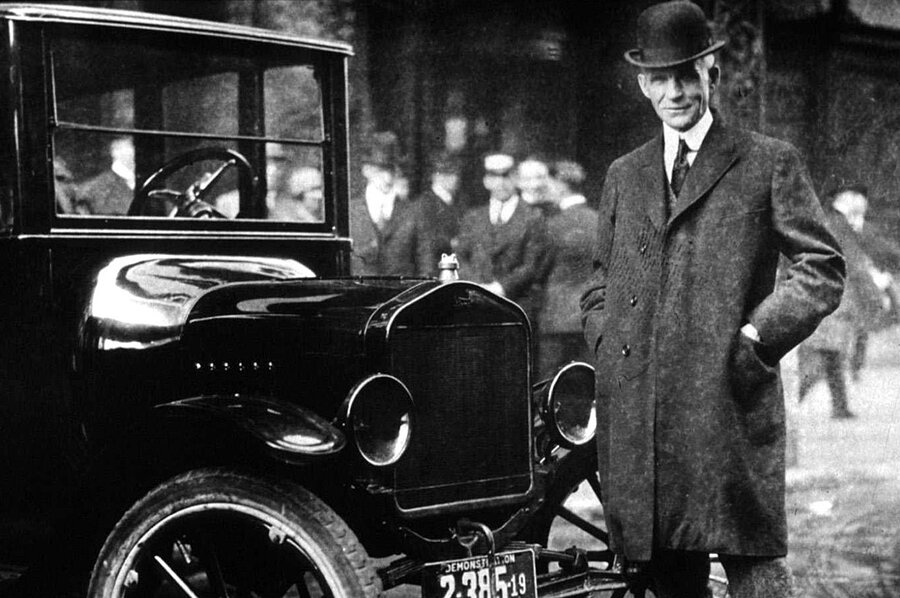From Model T to Prius: 13 big moments in fuel efficiency history
Loading...
•1908: Henry Ford introduces the Model T. The gasoline-powered car enjoys up to 21 miles per gallon (just six m.p.g. fewer than the average new vehicle sold today).
•1935: American automakers multiply to meet a surge in demand and to capitalize on innovations made during World War I. Fuel efficiency bobs around 14 m.p.g.
•1973: Arab oil embargo creates a worldwide shortage. Fuel prices skyrocket. With US vehicles hovering around 12 m.p.g., fuel economy becomes an important selling point for new cars.
•1975: Congress enacts America's first Corporate Average Fuel Economy (CAFE) regulations, designed to improve vehicle efficiency. The Honda Civic, reaching more than 40 m.p.g. on the highway, wins top efficiency honors.
•1986: The Chevrolet Sprint achieves hybridlike efficiency with its computer-controlled carburetor, three-cylinder engine, and compact design. With 44 m.p.g. in the city and 53 on the highway, the car wins America's fuel-economy title three years in a row.
•1990: California passes legislation requiring 2 percent of new vehicles sold in the state to have no emissions by 1998.
•1991: US fuel efficiency average hits 16.9 m.p.g.
•2000: Toyota Prius rolls into American dealer lots. Government rates it at 52 m.p.g. in the city. The Prius is not the first hybrid in America – the Honda Insight arrived in 1999.
•2002: General Motors introduces the Hummer H2, which is nominated for the North American Truck of the Year award. Too big to need an official fuel economy rating, the H2 is estimated at about 10 m.p.g.
•2009: President Obama introduces the most aggressive US fuel efficiency standards yet, requiring an average of 39 m.p.g. for cars and 30 m.p.g. for trucks by 2016. Current national average climbs to 25 m.p.g.
•2010: Capable of driving 100 miles on a single charge, the all-electric Nissan LEAF goes on sale alongside the Chevrolet Volt, an electric car with a gas engine as backup.
•2011: US government proposes new CAFE standards to take effect in 2017. The Obama administration's long-term goal: an average fuel economy of 54.5 m.p.g. for 2025 models.
•2012: The 2012 Mitsubishi i, a compact electric, receives a rating of 112 m.p.g.-equivalent. The 2012 Bugatti Veyron, a two-seat sports car, ranks last with 10 m.p.g. (but at least it can go 268 miles per hour).
For more on how technology intersect daily life, follow us on Twitter @venturenaut.
[Editor's note: This is an updated version of an article that appeared in the February 13 issue of The Christian Science Monitor magazine.]







